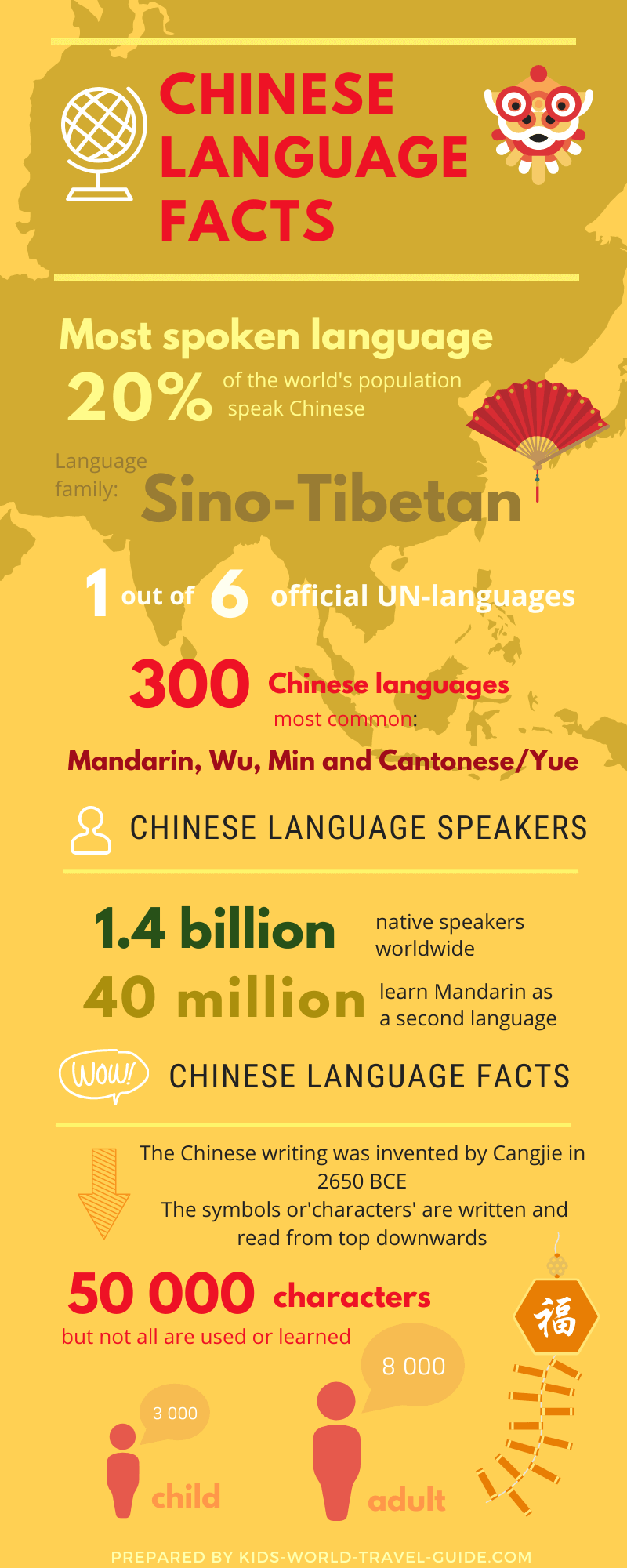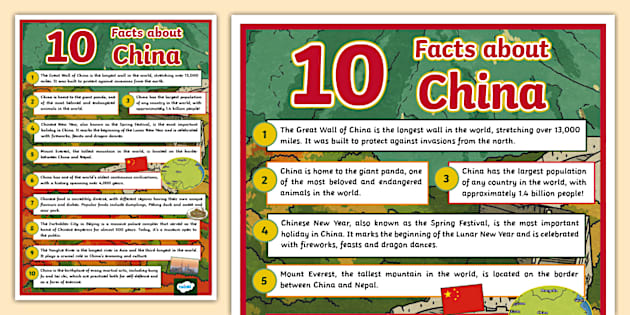10 Interesting Facts and Figures about Mandarin Chinese
Mandarin Chinese, the most spoken language in the world, is a fascinating subject filled with rich history and unique linguistic features. With over a billion native speakers, it plays a crucial role in global communication, business, and culture. But beyond its widespread use, Mandarin holds many surprising facts and figures that highlight its complexity and charm. From its tonal nature to its character-based writing system, the language offers endless intrigue for learners and enthusiasts alike. In this article, we explore 10 interesting facts and figures about Mandarin Chinese that showcase its significance, uniqueness, and enduring appeal in our interconnected world.
10 Interesting Facts and Figures about Mandarin Chinese
1. Mandarin Chinese is the Most Spoken Language in the World
Mandarin Chinese holds the title of the most spoken language globally, with over 1.1 billion native speakers. It is the official language of China, Taiwan, and Singapore, and its influence continues to grow due to China's economic and cultural expansion.
| Fact | Figure |
|---|---|
| Native Speakers | 1.1+ billion |
| Official Countries | China, Taiwan, Singapore |
2. Mandarin Has Four Main Tones
Unlike many languages, Mandarin Chinese is a tonal language, meaning the pitch or intonation of a word changes its meaning. There are four primary tones (plus a neutral tone), making pronunciation critical for clear communication.
See AlsoWhat is the Hungry Ghost Festival in China?| Tone | Example (Pinyin: ma) |
|---|---|
| First Tone (Flat) | mā (mother) |
| Second Tone (Rising) | má (hemp) |
3. Chinese Characters Are Thousands of Years Old
The Chinese writing system is one of the oldest continuously used scripts in the world, with origins dating back over 3,000 years. Modern simplified characters were introduced in the 20th century to improve literacy rates.
| Script Type | Time Period |
|---|---|
| Oracle Bone Script | ~1200 BCE |
| Simplified Characters | 1950s-Present |
4. Mandarin is a Key Language for Business
Due to China's economic power, Mandarin is considered a critical language for global business. Many multinational companies prioritize hiring Mandarin-speaking professionals to tap into the Chinese market.
| Industry | Demand for Mandarin |
|---|---|
| Technology | High |
| Finance | Very High |
5. Over 50,000 Chinese Characters Exist
While 2,500–3,000 characters are needed for basic literacy, there are over 50,000 characters in total. However, only a fraction are commonly used today.
See AlsoSimple Chinese Food: Braised Pork With Dry Bean Curd| Character Count | Usage Level |
|---|---|
| Basic Literacy | 2,500–3,000 |
| Total Characters | 50,000+ |
What is a fun fact about Mandarin Chinese?

Mandarin Chinese Has No Alphabet
Unlike English, Mandarin Chinese does not use an alphabet. Instead, it relies on characters (汉字 - hànzì), each representing a syllable and often a complete word or concept. Here are some key points:
- Logographic system: Each character is a unique symbol with meaning, not tied to pronunciation.
- Tones matter: The same syllable can have different meanings based on tone (e.g., mā (mother) vs. mà (scold)).
- Thousands of characters: Fluency requires knowing around 3,000-5,000 characters.
Mandarin Is the Most Spoken Language Globally
With over 1 billion native speakers, Mandarin dominates as the world's most spoken language. Key details include:
See AlsoReview: The Geography of Thought: How East Asians and Westerners Think Differently… And Why- Official language: It’s the primary language in China, Taiwan, and Singapore.
- Growing influence: Due to China's economic power, Mandarin is increasingly studied worldwide.
- Dialect diversity: Other Chinese dialects (e.g., Cantonese) are often mutually unintelligible.
Mandarin Uses Four Main Tones
Tones are crucial in Mandarin, changing a word's meaning entirely. Here’s how they work:
- First tone (¯): High and flat (e.g., mā - mother).
- Second tone (´): Rising, like a question (e.g., má - hemp).
- Third tone (ˇ): Falls then rises (e.g., mǎ - horse).
- Fourth tone (`): Sharp and falling (e.g., mà - scold).
Chinese Characters Are Ancient
Chinese writing dates back over 3,000 years, making it one of the oldest continuously used systems. Highlights:
- Oracle Bone Script: The earliest form, used for divination in the Shang Dynasty.
- Simplification: In the 1950s, China simplified characters to boost literacy.
- Traditional vs. Simplified: Taiwan and Hong Kong still use traditional characters.
Mandarin Grammar Is Surprisingly Simple
Compared to many languages, Mandarin grammar is straightforward in several ways:
See AlsoLearning the second tone in Mandarin Chinese- No verb conjugation: Verbs stay the same regardless of tense or subject.
- No plurals or genders: Context or additional words indicate number/gender.
- Word order rules: Subject-Verb-Object structure is rigid but predictable.
What are 10 interesting facts about China?

The Great Wall of China
The Great Wall of China is one of the most iconic structures in the world. Here are some fascinating facts about it:
- It stretches over 13,000 miles, making it the longest man-made structure.
- Contrary to popular belief, it cannot be seen from space with the naked eye.
- It was built over 2,000 years by various dynasties for protection against invasions.
Chinese Inventions
China has contributed some of the most revolutionary inventions to the world. Here are a few:
See Also10 Most Useful Chinese Internet Slang Words- Paper was invented in China around 105 AD by Cai Lun.
- The compass, crucial for navigation, originated during the Han Dynasty.
- Gunpowder was discovered in the 9th century, changing warfare forever.
Population and Diversity
China is the most populous country with incredible cultural diversity:
- It is home to over 1.4 billion people, nearly 18% of the world's population.
- There are 56 recognized ethnic groups, with the Han Chinese being the majority.
- Mandarin is the official language, but there are hundreds of dialects spoken.
Panda Diplomacy
Giant pandas are a national symbol of China and play a unique role in diplomacy:
- Pandas are native only to China and are considered a national treasure.
- China loans pandas to other countries as a gesture of goodwill, known as panda diplomacy.
- There are only about 1,800 pandas left in the wild, making them endangered.
Economic Powerhouse
China has rapidly become a global economic leader with remarkable growth:
- It is the world's second-largest economy, after the United States.
- The Yuan (RMB) is increasingly used in international trade.
- China is the largest exporter of goods, producing everything from electronics to textiles.
What is Mandarin known for?
:max_bytes(150000):strip_icc()/mandarin-orange-landscape_annotated-9b998db0c53849798d0fec6638c02622.jpg)
Mandarin as the Most Spoken Language in the World
Mandarin Chinese is known for being the most spoken language globally, with over 1 billion native speakers. It serves as the official language of China and Taiwan and is one of the four official languages of Singapore. Mandarin's dominance stems from:
- China's large population, which contributes to its widespread use.
- Its role as the primary language of education, media, and government in Mandarin-speaking regions.
- The increasing global influence of Chinese economy and culture, driving more learners worldwide.
Mandarin's Tonal Nature
One of the most distinctive features of Mandarin is its tonal system, where the meaning of a word changes based on pitch. There are four main tones and a neutral tone, making pronunciation crucial. Key aspects include:
- The first tone is high and level (e.g., mā 妈 - mother).
- The second tone rises (e.g., má 麻 - hemp).
- The third tone dips and rises (e.g., mǎ 马 - horse).
- The fourth tone falls sharply (e.g., mà 骂 - scold).
Simplified vs. Traditional Chinese Characters
Mandarin is written using Chinese characters, which come in two forms: simplified (used in mainland China) and traditional (used in Taiwan, Hong Kong, and Macau). Differences include:
- Simplified characters have fewer strokes, making them easier to learn (e.g., 国 vs. 國 for country).
- Traditional characters retain historical forms and are often considered more aesthetically complex.
- The choice between them depends on the region and cultural context.
Mandarin's Influence in Business and Technology
Due to China's economic growth, Mandarin has become essential in global business and technology. Reasons for its importance:
- China is a major manufacturing and trade hub, making Mandarin valuable for negotiations.
- Tech giants like Alibaba and Huawei operate primarily in Mandarin.
- Learning Mandarin opens opportunities in emerging markets and startups.
Cultural Richness of Mandarin
Mandarin is deeply tied to Chinese culture, including literature, philosophy, and arts. Notable highlights:
- Classic texts like The Art of War and Confucian works were written in Classical Chinese, a precursor to Mandarin.
- Modern Mandarin is used in films, music, and TV dramas, gaining international popularity.
- Festivals like Chinese New Year and idioms (chengyu) reflect cultural wisdom.
Frequently Asked Questions (FAQ)
What makes Mandarin Chinese the most spoken language in the world?
Mandarin Chinese is the most spoken language globally due to China's massive population, with over 1 billion native speakers. It is the official language of China, Taiwan, and Singapore, and its widespread use in business and education further solidifies its dominance. Additionally, the Chinese diaspora around the world contributes to its global reach, making it a critical language for international communication.
How many characters are there in the Mandarin Chinese writing system?
The Mandarin Chinese writing system is logographic, meaning each character represents a word or concept. While there are over 50,000 characters in total, a literate person typically knows around 5,000 to 8,000. For daily use, mastering 2,500 to 3,000 characters is usually sufficient to read newspapers and engage in everyday conversations.
Why is Mandarin Chinese considered a tonal language?
Mandarin Chinese is classified as a tonal language because the meaning of a word can change based on the tone used when pronouncing it. There are four main tones (plus a neutral tone), each altering the word's definition. For example, the syllable ma can mean mother (first tone), hemp (second tone), horse (third tone), or scold (fourth tone), depending on the tone applied.
What role does Pinyin play in learning Mandarin Chinese?
Pinyin is the Romanization system for Mandarin Chinese, using the Latin alphabet to represent pronunciation. It serves as a crucial tool for beginners, helping them associate characters with sounds before mastering the writing system. Pinyin is also widely used in digital input methods, making typing in Chinese more accessible for learners and native speakers alike.
Leave a Reply

Related Posts